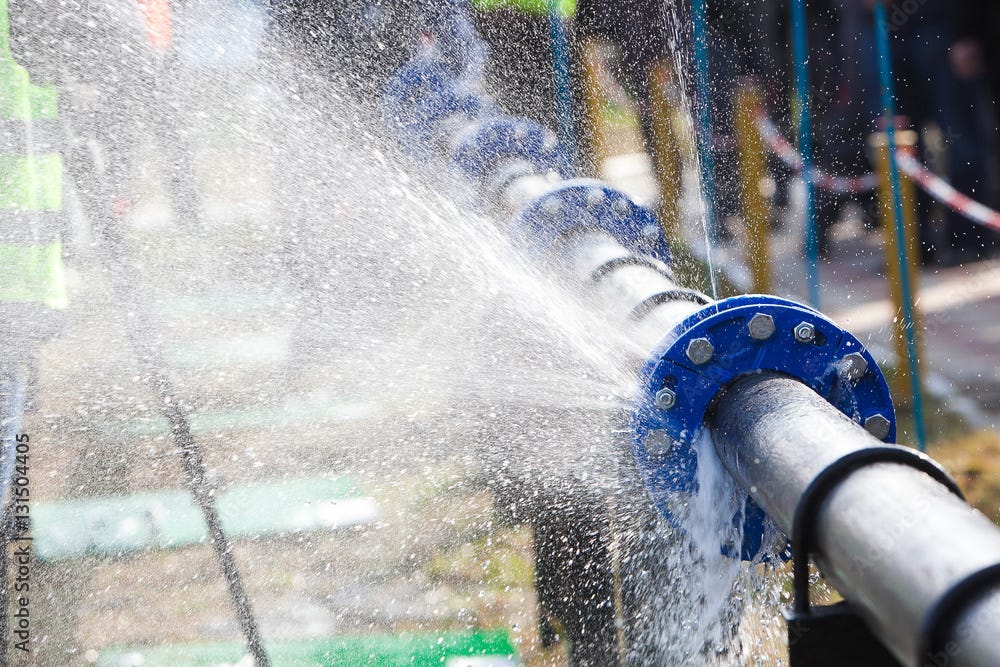Home Improvement
Pipe Leak Repair: A Comprehensive Guide

Homeowners facing the stress and expense associated with pipe leaks can find it stressful, with water constantly dripping onto floors and potential water damage, not to mention repair costs looming large in their minds. But as per experts like Thereliningcompany knowing how to address them quickly and effectively can save both time and money; in this blog we offer a comprehensive guide on pipe leak repair from identification through fixing it to preventing future leaks.
Locating a Leak
Visual Inspection: Begin by conducting a visual inspection of your plumbing system, keeping an eye out for visible signs of water leakage such as damp spots on walls, ceilings or floors and discolored patches or peeling paint; all strong indicators that a pipe leak exists.
Auditory Clues: Listen for any sounds of water dripping near plumbing fixtures, pipes or walls – even slow leaks can produce a noticeable dripping sound over time.
Water Meter Test: If you suspect there’s a leak in your plumbing system, switch off all water sources in your home and check your water meter. If it continues to register water usage even when all sources have been switched off, that indicates a possible leak somewhere within it.
Before beginning pipe leak repair, it’s essential to take some temporary measures to limit any further damage:
Turn Off the Water: Locate and disable your main water shutoff valve to halt the flow of water into your home and stop further leakage while working on repairs. This will allow for easier maintenance work and avoid leaks from occurring while working.
Drain Your Pipes: Open all faucets and fixtures to drain any remaining water out of your plumbing system and reduce pressure, as well as potential for further leaks. Doing this will also decrease pressure levels and minimize future leaks.
Capturing Dripping Water: Place buckets or towels underneath any areas where there is leakage to capture any dripping water that might otherwise cause further damage.
Repairing the Leak
Once you’ve identified the source of a leak, the next step should be repairing it. Here are steps for doing so:
Pipe Inspection: When inspecting damaged pipes, first ascertain their severity by carefully inspecting cracks or holes to assess any leakage issues that require repair; small damages might be patchable while larger problems might require full pipe replacement.
Gather Tools and Materials: For this step, you will require tools and materials such as a pipe cutter, pipe repair clamp, plumber’s tape, pipe wrench and an extra section of pipe (if necessary). Be sure to have safety gear such as gloves and eye protection at hand as well.
Isolate the Leak: To locate and fix leaks near joints or connections, you may require cutting out damaged sections of pipe using a pipe cutter to ensure clean cuts with straight edges.
Apply Repair Solutions: For small leaks, plumber’s tape or pipe repair clamps may provide effective solutions. Wrap the tape tightly around the damaged area or install according to manufacturer specifications.
Reassemble and Test: After cutting out a section of pipe, carefully reattach it with new pieces so as to secure it properly. Turn back on the water source, and check carefully for leaks or possible further issues.
Preventing Pipe Leaks To avoid future pipe leaks, take these preventive steps:
Maintain Regular Inspections: Conduct regular visual inspections to detect any potential problems as soon as they arise.
Maintain Insulation: For pipe insulation in colder climates to work effectively and avoid freezing and bursting, make sure it is sufficient.
Monitor Water Pressure: High water pressure can place stress on pipes and lead to leakage issues, so investing in a pressure regulator could be wise if needed.
Professional Inspection: Regular professional inspections by licensed plumbers will allow them to spot potential issues before they become major ones.
Conclusion
Responding quickly and efficiently to a pipe leak can save both you and your wallet from costly repairs and water damage. By quickly identifying, temporarily mitigating, and permanently repairing it as soon as it occurs, you can ensure your plumbing system remains in top condition. Furthermore, adopting preventative measures and performing regular maintenance will help limit future pipe leaks while keeping your home’s plumbing in top shape.
Harper Harrison is a reporter for The Hear UP. Harper got an internship at the NPR and worked as a reporter and producer. harper has also worked as a reporter for the Medium. Harper covers health and science for The Hear UP.










